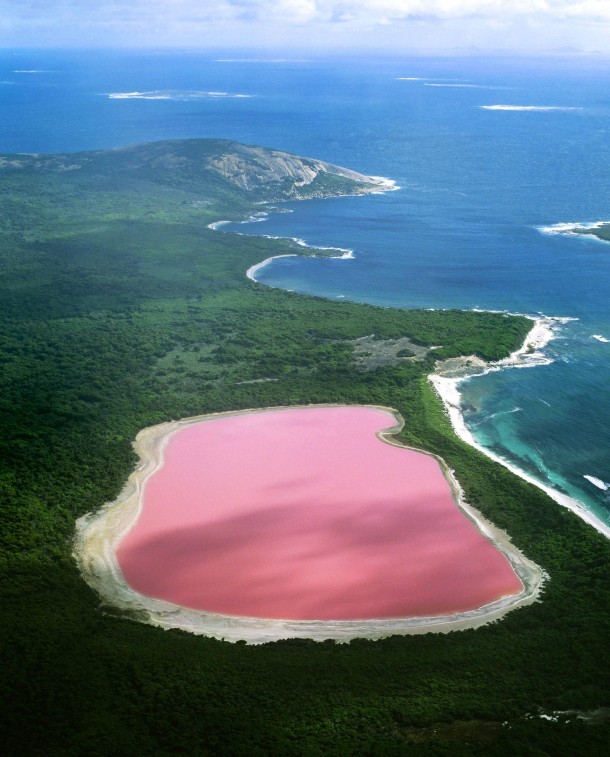Hi!
It's sunny may! So maybe It is time for thinking about summer break, how about pink lake? Checkout!
 The island and lake are thought to have been first charted by the Flinders expedition in 1802. Captain Flinders is said to have observed the pink lake after ascending the island's peak. John Thistle, the ship's master, collected some of the lake's water, which he found to be saturated with salt. Although the source of the pink colour has not been definitively proven in the case of Lake Hillier, the pink colour of other salt lakes (e.g., Pink Lake) in the region arises from a dye created by the organisms Dunaliella salina and Halobacteria. Another hypothesis is that the pink colour is due to red halophilic bacteria in the salt crusts.
The island and lake are thought to have been first charted by the Flinders expedition in 1802. Captain Flinders is said to have observed the pink lake after ascending the island's peak. John Thistle, the ship's master, collected some of the lake's water, which he found to be saturated with salt. Although the source of the pink colour has not been definitively proven in the case of Lake Hillier, the pink colour of other salt lakes (e.g., Pink Lake) in the region arises from a dye created by the organisms Dunaliella salina and Halobacteria. Another hypothesis is that the pink colour is due to red halophilic bacteria in the salt crusts.
Lake Hillier, is a lake on Middle Island, the largest of the islands and islets that make up the Recherche Archipelago, Western Australia.
The most notable feature of this lake is its pink colour. It is such a significant distinguishing feature of the archipelago that air passengers often take note of it. The colour is permanent, and does not alter when the water is taken in a container. The length of the lake is about six hundred metres. The lake is surrounded by a rim of sand and a dense woodland of paperbark and eucalyptus trees with a narrow strip of sand dunes covered by vegetation separating it to the north from the Southern Ocean.
I hope it was interesting for all.
Bye!













